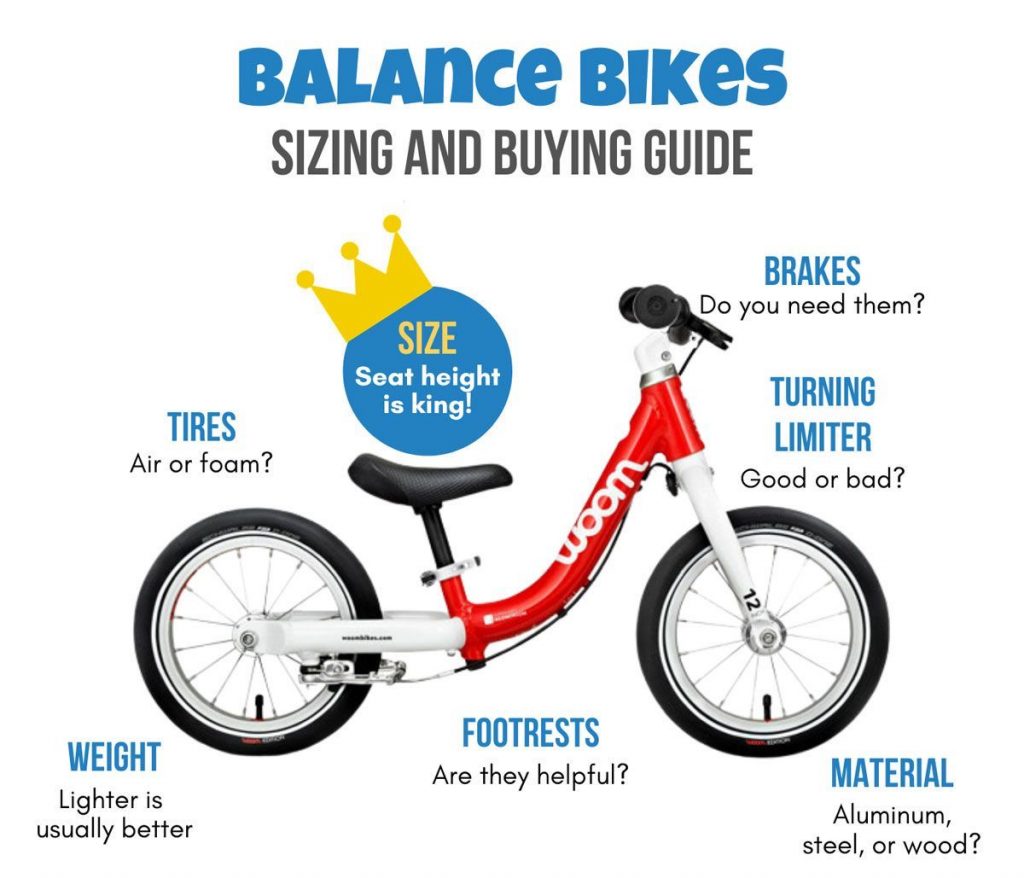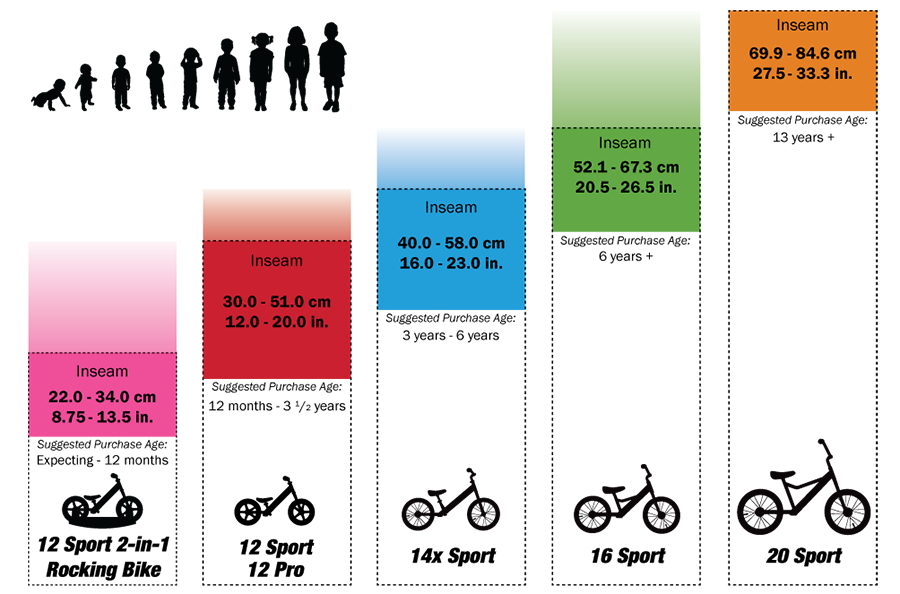Imagine a small children’s bike, with no cranks or pedals – and you’ve pretty much got a balance bike. Before you ask if you can scrimp on buying one, and just take the pedals off a sibling’s machine – the best balance bikes are generally lighter than small-wheeled children’s bikes, and carefully adapted to suit very small hands and bodies.
Children push the bike along with their feet. Once they feel more confident, the next step is to teach your child to push and then glide – lifting their legs up to make the most of the momentum gained.
Balance bikes are also called:
Glider bikes
Strider bikes (actually the name of a brand specialising in balance bikes)
Run bikes
Runner bikes
Pedal-less bikes
Children can start riding balance bikes when they’re around 18-months to two years old, and little ones up to around the age of five enjoy them. In most cases, children will move on to a bike with pedals at around the age of four. There isn’t a top-end restriction on age, though, and you can even get balance bikes for adults. It’s important to remember that balance bikes need to be the correct size for their rider: bike fit is just as important for kids as it is for adults. Of course, children grow quickly between the ages of two and five, so ideally you’ll want to select a bike that is adjustable.
Size Chart Balance Bikes
As the name suggests, a balance bike teaches your child a very crucial skill: balance. Learned early, this can have a notable impact on their confidence when it comes to cycling unsupported. Not only this, but a balance bike will also teach your child to control the movement of the bike with their body weight and steering.
While a child learning to pedal using training wheels might find the transition to balancing, steering, and pedalling all at once a little overwhelming, a child who has graduated from a balance bike will mainly just be adding pedalling to their existing skillset.
Balances bikes are not one-size-fits-all. Although they are often marketed at such, balance bikes come in a wide range of sizes and fit a wide range of ages. Purchasing the right size balance bike for your child is essential because it directly correlates to their success on a bike! A balance bike designed to fit a 2-year-old is not going to be a great fit for a 4-year-old.
Wheel size and seat height are the two things that determine the size of a balance bike. Due to the vast height differences between toddlers and preschoolers, there are balance bikes of many different sizes . Unlike regular bikes, there are no standard “sizes” for balance bikes. Every model and bike manufacturer is different, as you can see in the chart below.
Online listings for balance bikes often list a bike’s wheel size, such as 12″ or 14″. Like regular bikes, the wheel size of a balance bike is a measurement of the inside diameter of the bike’s wheel.
Unlike regular bikes, however, a balance bike’s wheel size is typically not a good indication of its size. Bikes with the same 12″ wheel size can be sized to either fit an 18-month old or a 4-year-old! As a result, the wheel size for a balance bike should only be used as a rough indication of the bike’s size.
Measuring a child’s inseam can be tricky, but with a few tips, it shouldn’t take too much wrestling. The best way to measure their inseam is to use the book and wall method.
With shoes on, have the child stand against a wall, squeeze the book between their legs, and then slowly raise the book up until it hits their crotch. Level the book with the floor, then measure the distance between the top of the book to the ground.
With that inseam measurement, you are now ready to calculate the proper position at which the balance bikes’ seat height should be set while riding. This seat height measurement is KEY to helping you find the perfect size balance bike for your child.
The ideal position for riding balance bikes is for your child to have the ability to touch the ground flat footed with a small bend in the knee while sitting on the saddle.
There are two ways to determine the best size. The optimal method is to take an inseam measurement. If you are unable to obtain the inseam, use the child’s age as the best starting point, and also consider body weight, explained below.
While the child is standing, measure the distance from the ground to the child’s crotch. This is easy to do with a tape measure and a hardcover book. Use the book (square it against a wall) to correctly measure to the sit bones by gently pushing the book upwards into the crotch. The idea is to avoid eyeballing a measurement and to instead find the true measure in order to avoid buying a bike that is too small. This is pretty common because the compression of soft tissue, compression of a padded seat, and softness of bike tires is not correctly accounted for, and what you thought was a 13″ inseam, is really 14″.
Start by looking through the bikes in our Sizing Guide by Ages below and review the minimum and maximum height measurement for the saddle. This should help you identify the bikes that will be a good fit. Take your inseam measurement and use it to narrow your search by minimum seat heights. The minimum seat height can be equal to your child’s inseam measurement, because when shoes are worn, there will be an additional inch to work with, and it will provide a slight bend in the knees when seated on the bike. This is what you want.
Another consideration that help to eliminate certain bikes from your list is body weight. Our recommendation is for the child to outweigh their bike by a minimum factor of three. For example: if your child weighs 27 pounds, then their bike’s maximum weight should be 9 lbs. Or if the bike you are interested in weighs 12 lbs, the recipient’s weight should be at least 36 lbs.
Also keep in mind that balance bikes that are extremely light make the transition to a pedal bike in the future less successful, and sometimes a 2nd balance bike is needed to fill the gap. It is beneficial to consider the weight of the first pedal bike planned for the future. For example, if it weighs 20+ lbs, transitioning from a 5-6 lb balance bike is unrealistic, as it expects the child to handle a bike that weighs more than 3x more. Lighter does not mean better! It usually just means that it’s a toy industry product, instead of a bicycle industry product.


